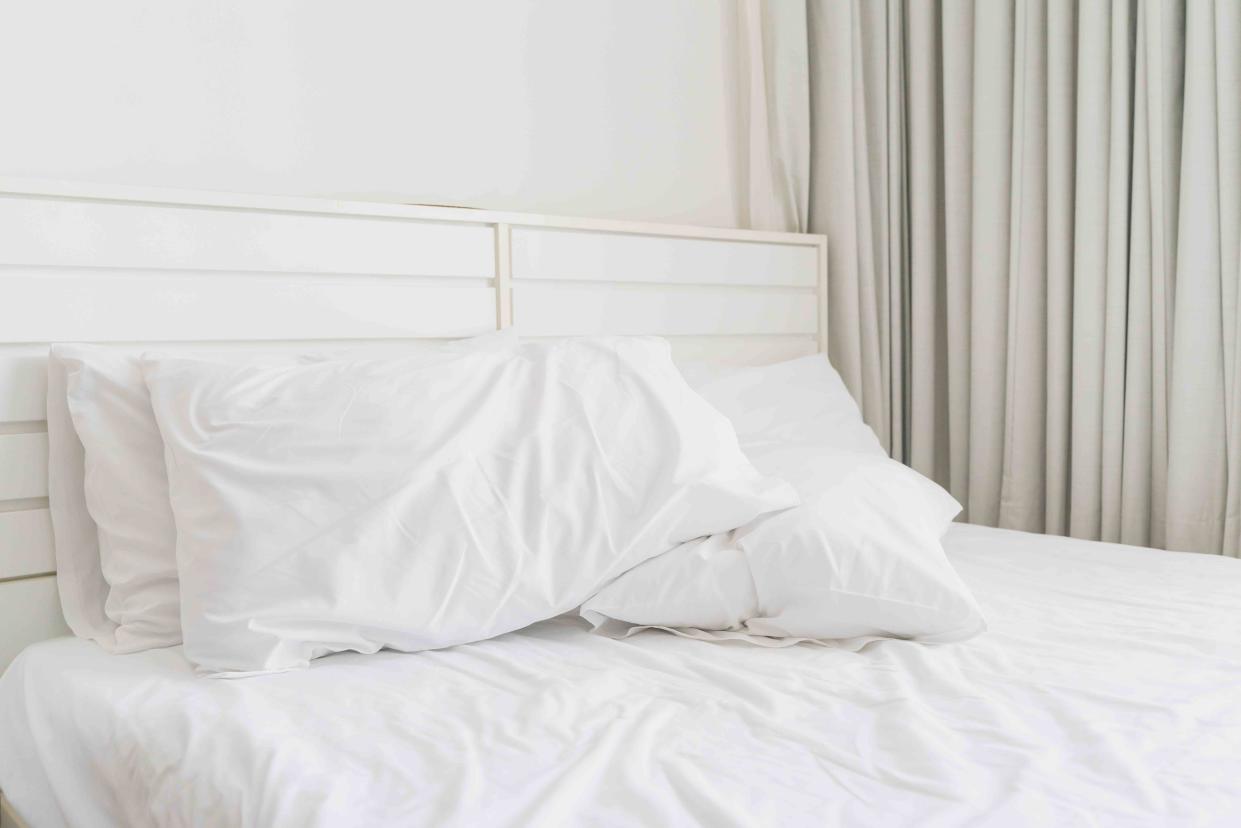Bed Sheet Buying Guide: What You Need to Know

Ratana21 / Getty Images
Bed sheet thread count refers to the number of threads or yarns that make up one square inch of fabric. Thread count is determined by counting the vertical and horizontal threads that are woven together within the square inch of fabric.
Bed sheets are available in a wide variety of fabrics, price points, and therefore also thread counts. While it is often assumed that the higher the thread count, the better quality the bed sheets are, that's not necessarily the case. If you're in the market for new sheets, keep reading to learn more about what the best thread count is, the different sheet materials available, and what sheets are the softest.
What Is Thread Count?
Thread count in reference to bed sheets is the total number of horizontal and vertical threads woven together to make up one square inch of fabric. The higher the thread count number, the more tightly woven the threads are.
When it comes to the ideal thread count, it varies from material to material, as the thickness of the threads used affects the thread count, but not necessarily the sheet quality.
Does Thread Count Matter?
It is generally assumed that the higher the thread count, the better the quality of the sheets, however, that's not necessarily the case. The type of material that the sheets are made from significantly affects the thread count; Some high-quality bed sheets such as linen sheets have a low thread count, but this is because they are woven from thick yarns and therefore a lower number of yarns fits inside a square inch of the fabric.
Sheet Material Types
Bed sheets are available in a variety of materials that range in softness, appearance, comfort level, and price point. The following are the most commonly used sheet materials:
Cotton
Cotton is one of the most popular bed sheet materials as it's breathable, durable, and hypoallergenic. When it comes to thread count, look for cotton sheets with a 400–500 thread count for ultimate comfort.
Percale
Percale sheets usually have a lower thread count than cotton sheets and are a popular choice if you're a warm sleeper. They're lightweight, breathable, and moisture-wicking for a cooling effect.
Sateen
For a silky smooth texture and a luxurious shine, opt for sateen sheets. They are tightly woven and a great choice for the cold winter months. For the best of sateen sheets, look for a set with a thread count between 300 and 600.
Linen
Linen sheets look effortlessly chic and are the epitome of casual luxury. They are breathable and durable but tend to be one of the most expensive sheet materials.
Linen sheets have a much lower thread count than other materials, however this isn't a reflection of lower quality. The yarns used are thicker than those used for cotton sheets, and therefore a lower number of them fits inside the square inch that constitutes thread count.
Flannel
Because flannel sheets are heavy, a lower thread count is considered sufficient. They are usually made from cotton, wool, or synthetic fabrics and their heavyweight construction makes them a warm and cozy option for colder seasons.
Bamboo
Bamboo sheets have become a popular sheet material because of their breathability which keeps you cool while you sleep. It's also incredibly soft to the touch, with a 300–500 thread count offering maximum comfort. Hot sleepers are recommended bamboo sheets due to their moisture-wicking properties.
Microfiber
Microfiber sheets are woven from synthetic fibers and have a soft, silky-smooth texture. They are not as breathable as some other sheets, which makes them a good option for winter bedding. Microfiber is also highly durable and doesn't wrinkle as much as cotton or linen does.
Weave Types
The type of weave refers to how threads are woven together to create a specific fabric texture. The following three weaves are commonly used to make bed sheets:
Plain
A plain weave is used for lightweight, breathable sheets such as percale sheets. The weave consists of an over and under pattern created by overlapping horizontal and vertical threads. It makes for sheets that are durable and have a comfortable cooling effect.
Sateen
A sateen weave consists of one horizontal thread woven over then under three vertical threads, as opposed to the one-to-one thread ratio of a plain weave. A sateen weave creates a silky, shiny texture and produces a durable fabric not prone to wrinkling.
Twill
A twill weave is used in heavyweight cotton to produce a durable product that can withstand longterm wear and tear. The weave uses a one-to-two thread ratio for sheets that are comfortable, well suited for colder months, and easy to care for given their wrinkle-resistant nature.
Frequently Asked Questions
What is the best thread count for sheets?
The best thread count number is different for each sheet material. For cotton sheets, look for a 400–500 thread count, for sateen sheets, opt for a 300–600 thread count, and for linen sheets a lower thread count of 80–150 is optimal.
What count sheets are the softest?
Percale sheets are considered one of the top sheet options when it comes to softness. They typically have a lower thread count and are lightweight and breathable, making them the perfect choice for the warm summer months or if you are a hot sleeper.
Which is better for sheets, cotton or microfiber?
Both are an excellent option. Cotton sheets are made from natural fibers and are breathable and cooling, while microfiber sheets are woven from synthetic fibers and are a good option for the colder months.
Read Next: How to Keep Sheets on a Bed: 10 Strategies
Read the original article on The Spruce.

